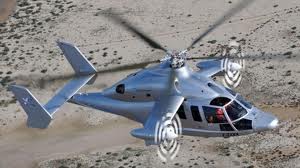6/15/12: Next week, the new demonstration helicopter the X3 will be visiting the United States. Second Line of Defense will be there as the tour kicks off in Dallas Texas.
SLD first saw the new helo at the Paris Air Show last year, and we are looking forward to catching up with development since then.
The high speed helo will be built to provide oil industries with a key capability to go to the deep water oil rigs that will be increasingly built in the years ahead. Eurcopter has pioneered power by hour contracts in the oil and gas industry, and the production version of a high speed Eurcopter helicopter will clearly be designed to provide high speed, range and speed, capabilities to this industry.
And at the same time, clearly security and defense teams will find this capability to be valuable in the years to come as well. And as we saw in Bold Alligator 2012, the Osprey clearly demonstrated the impact of speed and range on supporting ship-to-ship and ship-to-shore operations for a sea-based force.
Our first interview involving the X Cubed was with Jean-Michel Billig is Executive Vice President of Eurocopter for Research and Development.
The interview underscored that the helicopter is designed to provide a low cost high-speed operating form factor while ensuring the versatility and functionalities of an helicopter, such as VTOL, hovering, autorotation. It is aimed at customers who use rotorcraft for various missions where speed or mission duration is of the essence and therefore who could use higher speed to provide better solutions to their core missions.
And it aims at “affordable” high speed, by which Eurocopter sees mission costs reduced by the rotorcraft using both rotor blades and turbo props to gain efficiencies. And by building from a technical architecture extremely simple and close to classic helicopter platforms, Eurocopter is very confident it can provide limited increase of the production costs of the product.
The X3 can change the speed of its main rotor in flight, avoiding drag divergence on the advancing blade and increasing the stall speed of the retreating blade, while also reducing noise. The small stub wings unload the main rotor at speed, thus allowing for the reduced main rotor rpm.
In a follow-up interview with the X 3 test pilot, it was underscored that
Currently, the test aircraft is using a Dauphin airframe with NH-90 engines in addition to the turboprops. But Jammayrac indicated that Eurocopter might well look to a larger airframe for the production model.
Another aspect of the interview was how the test pilots are linked into the development process.
As Jammayrac underscored:
That’s a way to get a very deep knowledge of the aircraft because you know precisely how it was built. And from that, you are able – you know the limits very easily, so it makes flying the aircraft a lot more efficient.
https://www.sldinfo.com/an-update-on-the-x3-a-conversation-with-herve-jammayrac/


